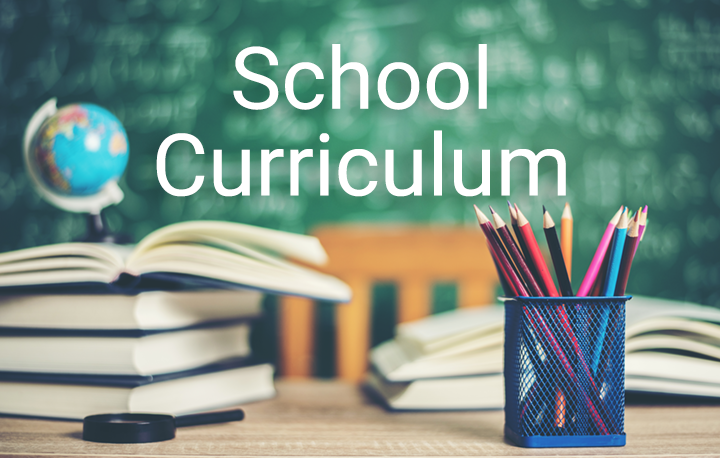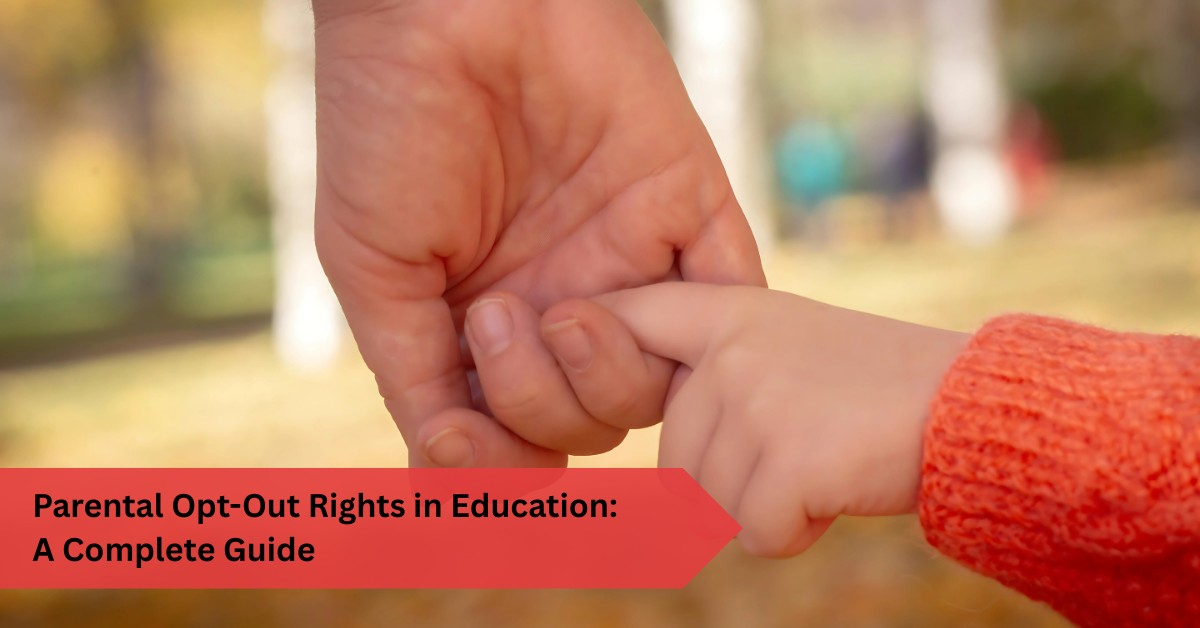Introduction:
Parents have always been the first teachers in a child’s life. Yet, as soon as children enter formal education, parents often find themselves wondering, “Do I still have control over what my child learns in school?” This question is at the heart of the debate over parental opt-out rights in education.
Parental Opt-Out Rights in Education enable parents to withdraw their children from lessons, activities, or tests that conflict with their family’s values or beliefs. While these rights protect parental authority and student privacy, they differ by state and often raise challenges for schools in ensuring consistent learning experiences.
In 2025, the issue gained national attention after a landmark Supreme Court ruling granted parents broader authority to withdraw their children from certain lessons. From sex education and LGBTQ+ themes to standardized testing and surveys, opt-out rights are reshaping how schools operate. But what do these rights mean for families, educators, and students? Let’s break it down step by step.
In This Article, we discuss “Parental Opt-Out Rights in Education.”
Historical Background of Parental Opt-Out Rights:
Parental opt-out rights in Education are not new. As far back as the 1970s, parents fought for greater influence over their children’s schooling. A pivotal case, Wisconsin v. Yoder (1972), granted Amish families the right to withdraw their children from school after eighth grade to preserve religious traditions.
Over the decades, similar disputes arose around sex education, evolution, and moral instruction. Some saw these cases as a way to protect family values, while others worried that they threatened the inclusivity of public education.
Fast forward to today, and the conversation is louder than ever.
Legal Framework of Opt-Out Rights:
At its core, the debate boils down to a tug-of-war between parental authority under the First Amendment and the state’s responsibility to provide a well-rounded education.
- Constitutional Roots: Courts have long recognized that parents have a fundamental right to direct their children’s upbringing.
- Supreme Court’s Role: The highest court continues to shape the boundaries of these rights, as seen in its 2025 ruling.
- Federal Laws: FERPA and PPRA further strengthen parental rights, especially regarding privacy and sensitive information.
Types of Educational Content Parents Commonly Opt Out Of:

Parents may seek to remove their children from:
- Sex Education: One of the most common areas, especially where instruction conflicts with family values.
- LGBTQ+ Inclusive Curriculum: A growing point of contention, highlighted by recent legal battles.
- Religious and Cultural Conflicts: Lessons on evolution, Halloween, or gender roles may spark objections.
- Standardized Testing: Some parents argue that tests are stressful and unnecessary.
- Social and Emotional Learning (SEL): A newer area where parents worry about ideological influence.
- Surveys and Data Collection: Thanks to PPRA, parents can shield their kids from intrusive questions.
Recent Supreme Court Rulings on Opt-Out Rights:
In July 2025, the Supreme Court ruled that parents could opt their children out of lessons that conflict with sincerely held religious beliefs. Justice Alito emphasized that parental authority extends into the classroom, not just the home.
But not everyone agreed. Justice Sotomayor warned the ruling could unleash “chaos” as schools struggle to predict every possible objection. Educators fear this will create inconsistent learning experiences for students across the nation.
Federal Laws Supporting Parental Rights:
Two major federal laws play a central role in the opt-out conversation:
- FERPA (Family Educational Rights and Privacy Act): This law allows parents to access their children’s educational records and protects against unauthorized sharing of personal data. Parents can challenge inaccurate information and request changes.
- PPRA (Protection of Pupil Rights Amendment): This law gives parents the right to opt their children out of surveys, analyses, or evaluations that touch on sensitive topics such as political beliefs, sexual behavior, income, or religious practices.
Together, these laws create a framework for parental involvement, though enforcement often varies by state and district.
State-Level Variations in Opt-Out Policies:
Not all states interpret opt-out rights the same way.
- Broad Opt-Out States: Texas, Florida, and Arizona allow parents significant flexibility, especially in areas like sex education and standardized testing.
- Restrictive States: California and New York take a stricter approach. In California, for example, parents cannot opt out of LGBTQ+ inclusive history lessons, though they may withdraw children from certain health education classes.
- Middle-Ground States: Many states fall somewhere in between, granting opt-outs for health or testing but restricting them in subjects considered essential, like science or history.
This patchwork system means that a family moving from one state to another could face drastically different rules.
Challenges and Criticisms of Parental Opt-Out Rights in Education:

While supporters view parental opt-out rights as a vital safeguard of family freedom, critics see them as a potential stumbling block for schools. Educators often highlight that widespread opt-outs disrupt the consistency of learning across classrooms.
Another criticism lies in the risk of curriculum censorship. Public schools are designed to expose students to a broad spectrum of ideas, preparing them for life in a diverse society. When parents remove children from controversial topics, such as evolution or LGBTQ+ history, some argue that students may grow up with knowledge gaps.
There is also a “slippery slope” concern. If one group opts out of sex education, another may object to standardized testing, while another could protest discussions on climate change or racial history. Critics fear that granting unlimited opt-out rights could lead to fragmented classrooms and unequal educational opportunities.
From a social perspective, opting out can sometimes create unintended stigma for students. A child pulled from a health class or inclusive activity may feel singled out, leading to awkward questions from peers. Schools must carefully design alternative meaningful activities so that students do not feel excluded or punished for their parents’ choices.
Despite these concerns, advocates argue that transparency and dialogue can ease tensions. Open communication between schools and parents can help clarify curriculum goals, address misconceptions, and foster compromise.
Impact of Opt-Out Rights on Students:
The ultimate question is: how do opt-out rights affect students themselves?
- Academic Impact: Missing key lessons can create knowledge gaps, especially in subjects that build on prior knowledge like science and math.
- Social Consequences: Being removed from class may cause feelings of isolation or embarrassment. Students may struggle to explain to peers why they are absent.
- Emotional Outcomes: Some students feel relieved when they opt out of stressful activities like standardized testing, while others may feel left behind.
- Balanced Growth: Supporters argue that opt-out rights ensure students grow up with values aligned to their families, reducing confusion and conflict at home.
The effect varies widely depending on how schools handle opt-out logistics and whether parents supplement learning at home.
Private Schools vs. Public Schools:
The rules also differ significantly between public and private schools. Public schools must comply with federal and state regulations, including FERPA and PPRA. Private schools, however, often have broader freedom to set their own curricula, meaning parents may need to rely more on school choice rather than opt-out provisions.
Still, parents in private institutions wield influence, especially when tuition and enrollment numbers are at stake. Many private schools work closely with families to customize education, often avoiding the disputes common in public settings.
Future Outlook of Opt-Out Rights:
Will opt-out rights expand further? Legal experts predict more lawsuits as families push for broader authority, while educators and advocacy groups push back to preserve standardized curricula. Technology, politics, and social change will continue shaping the debate.
What’s certain is that parental opt-out rights are no longer a fringe issue—they’re central to the future of American education. Expect more state legislation, ballot initiatives, and federal challenges in the years ahead.
Practical Tips for Parents:

- Draft an Effective Opt-Out Letter: Clearly state which lesson, activity, or test you are objecting to, and why.
- Know Your State Laws: Policies vary widely across the U.S., so research local regulations.
- Communicate with Administrators: Open conversations often resolve conflicts before they escalate.
- Renew Forms Annually: Many schools require yearly submissions to keep records updated.
- Request Alternative Activities: Ensure your child engages in meaningful work instead of simply sitting out.
Conclusion:
Parental opt-out rights represent both an opportunity and a challenge. For parents, they safeguard freedom of conscience and protect family values. For schools, they present logistical hurdles and the risk of fragmented learning. The debate will only intensify as America grapples with balancing individual rights and collective education goals.
Ultimately, the best path forward lies in collaboration, transparency, and mutual respect between parents and educators. When both sides work together, children benefit from an education that is not only academically strong but also aligned with family values and social responsibility.
FAQs:
1. What does parental opt-out mean in schools?
Parental opt-out refers to a parent’s legal right to withdraw their child from specific lessons, activities, or assessments that they find objectionable, such as sex education, standardized testing, or certain health topics.
2. Which subjects most commonly allow opt-out rights?
The most common areas include sex education, religious instruction, health classes, and standardized testing. Some states also allow opt-outs for activities like surveys, physical education, or controversial historical discussions.
3. Do all states in the U.S. provide parental opt-out rights?
No, opt-out laws vary significantly by state. Some states have clear legal frameworks protecting parental choice, while others leave decisions to local school districts or do not formally recognize opt-out rights at all.
4. How do opt-out rights affect teachers and schools?
Opt-out requests can create challenges for educators, as they must provide alternative lessons, manage attendance records, and ensure that opted-out students still meet learning objectives without missing critical content.
5. Can opting out negatively affect a student’s learning experience?
Yes, in some cases. Students may miss important lessons or feel excluded when peers participate in group activities. However, schools often design alternative assignments to ensure educational continuity while respecting parental wishes.
Ream More:
How to Tell If Eggs Are Bad: The Ultimate Guide
What to Pack for Your Europe Trip: The Ultimate Europe Packing List
Virtual Meeting Etiquette: Essential Rules for Professional Online Communication
United Airlines Flight UA770 Emergency Diversion: A Complete Story
Curriculum Vitae vs Resume: Understanding the Key Differences and Choosing the Right One
